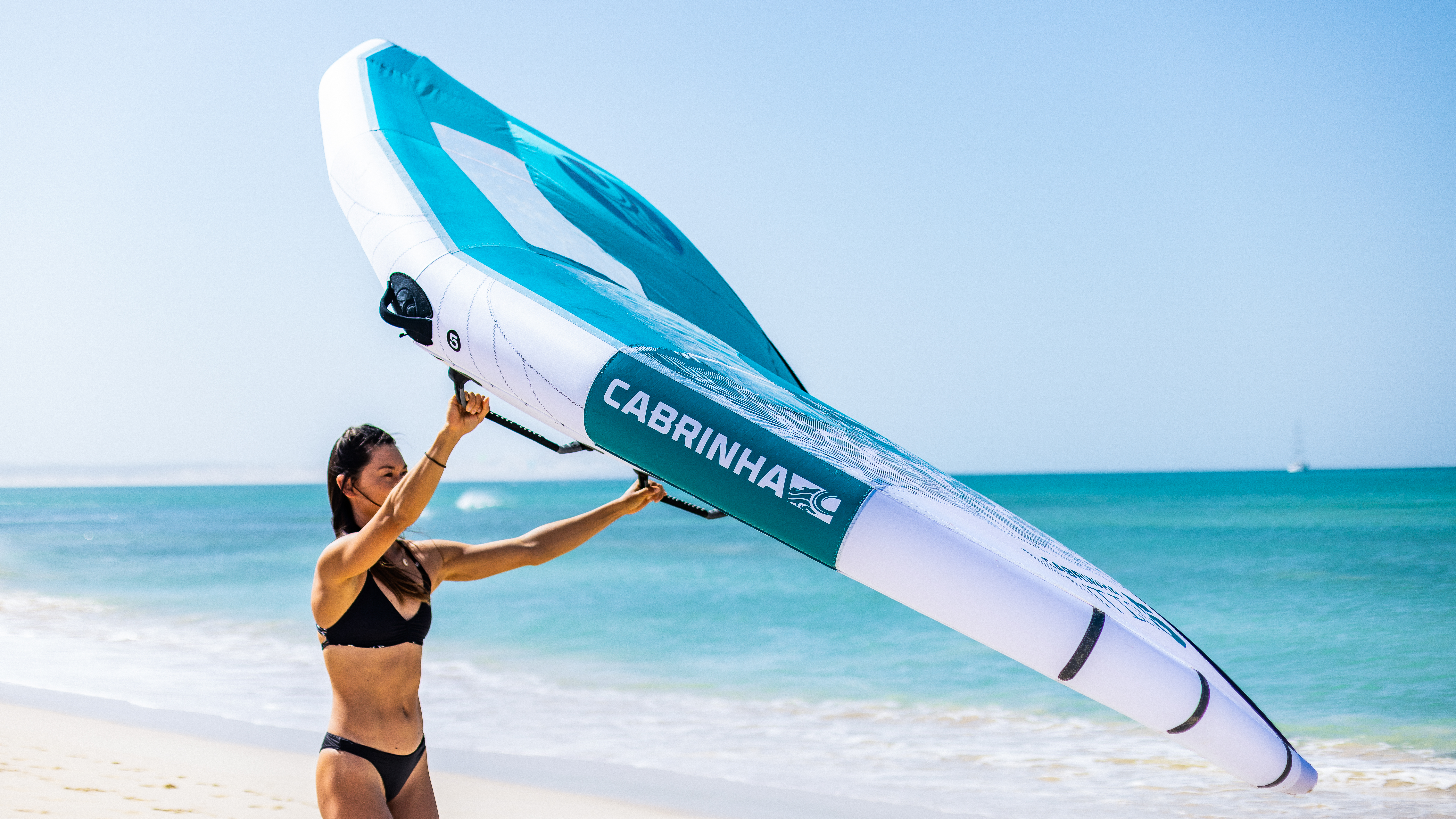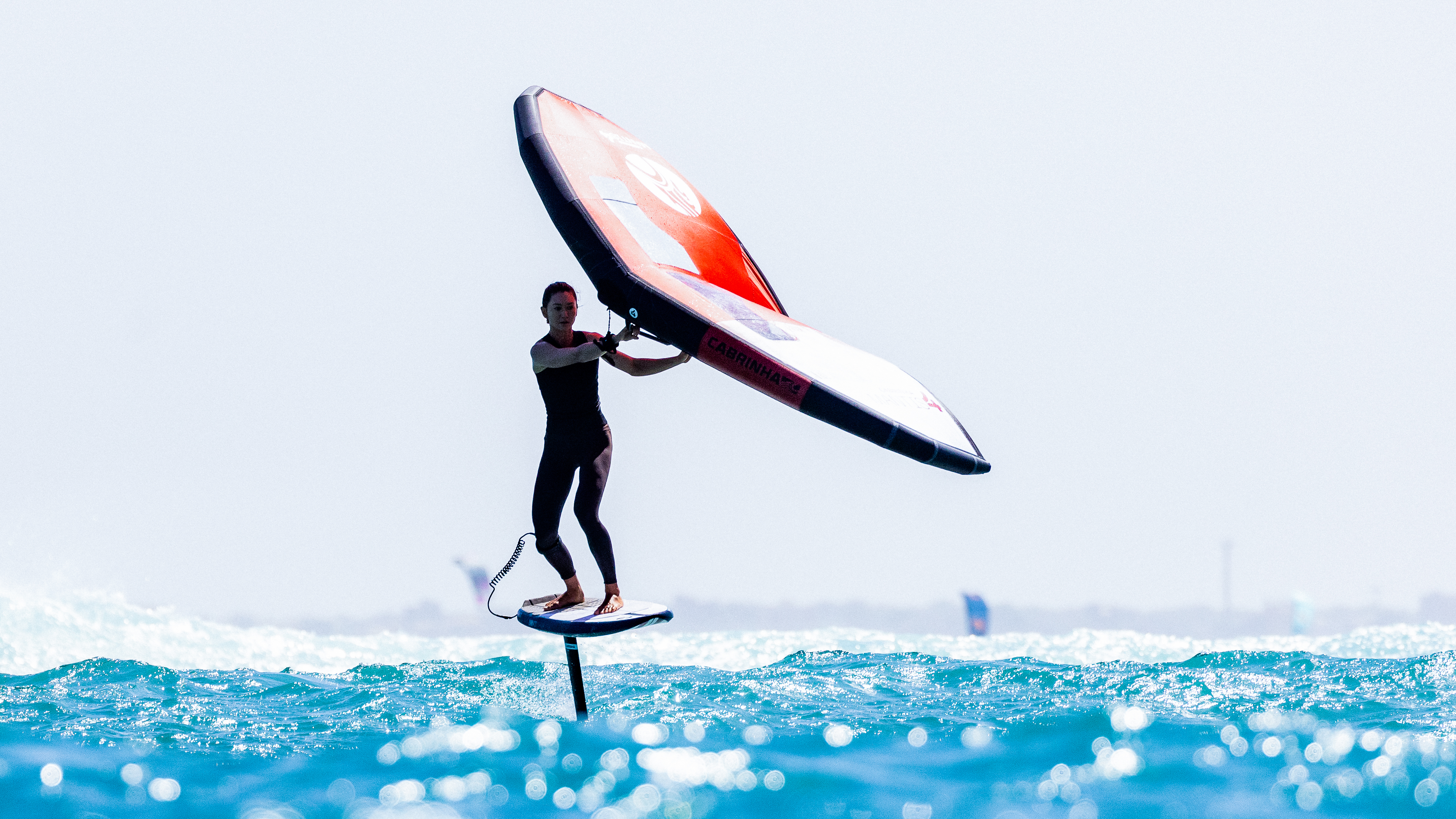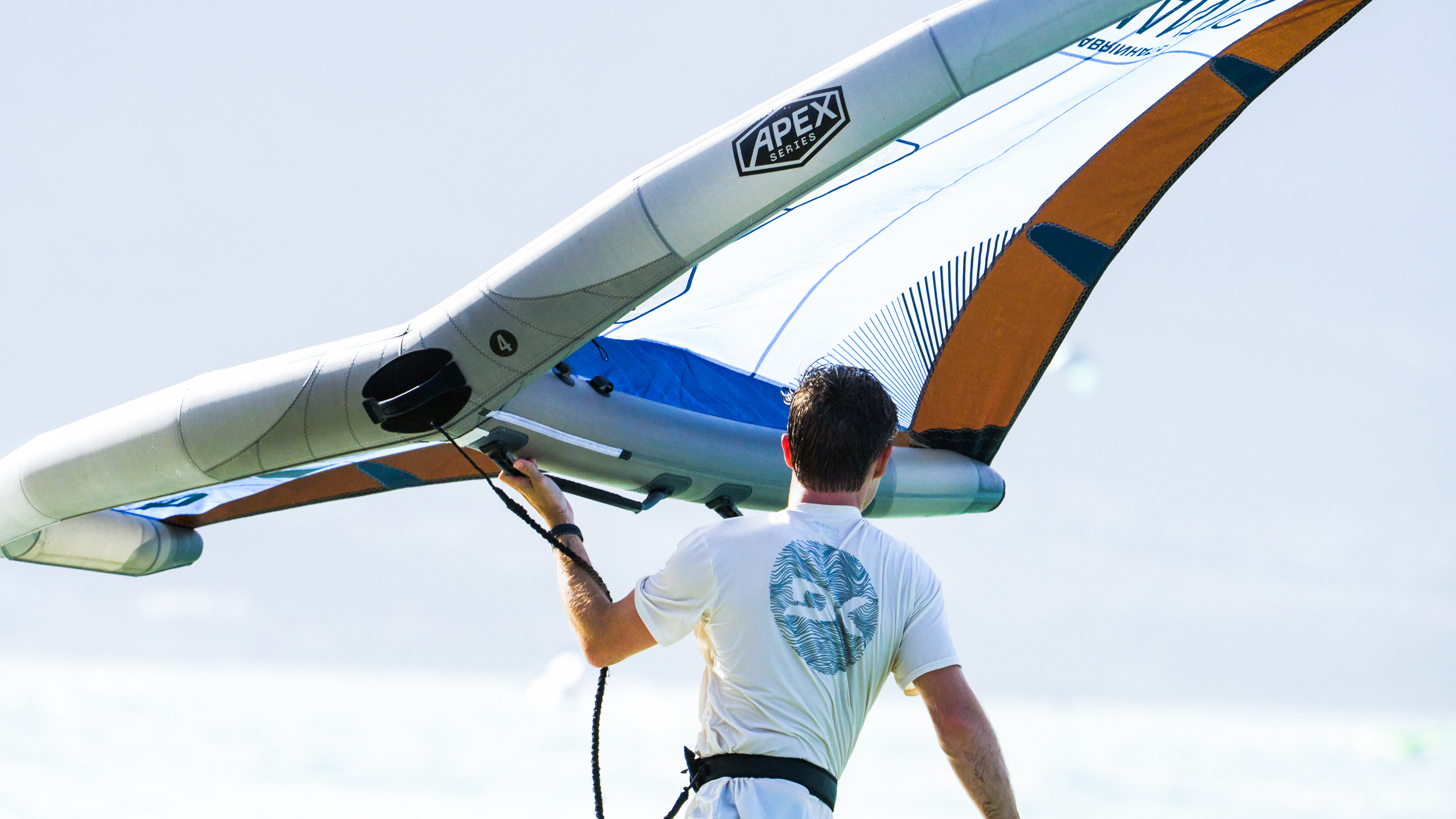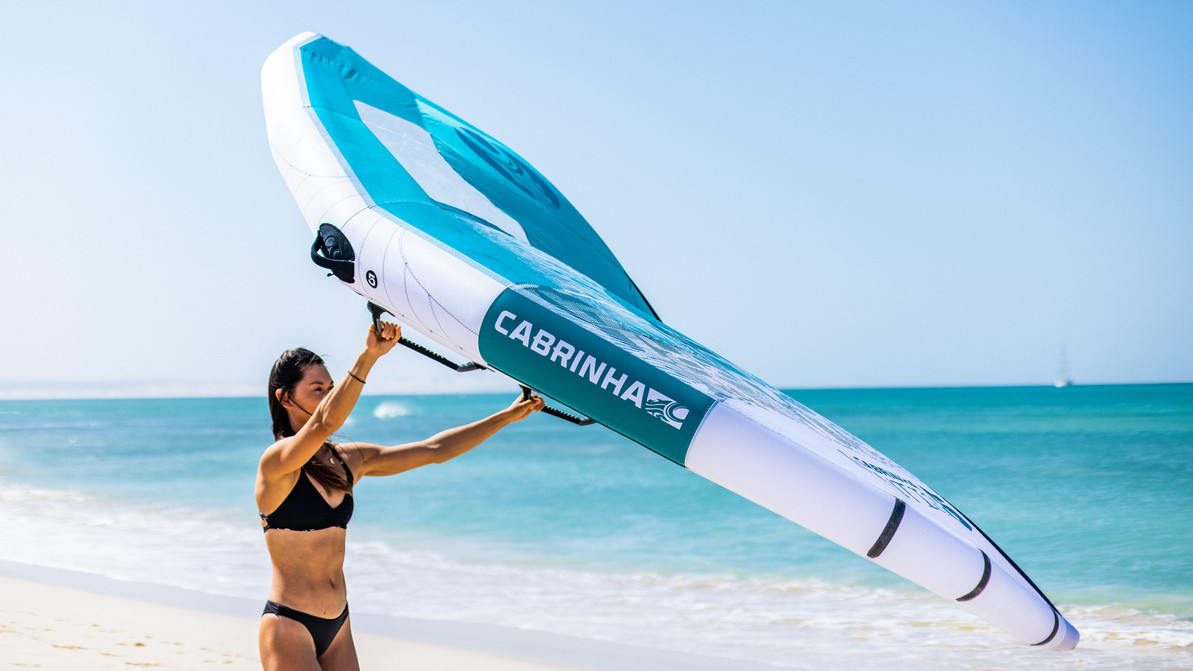Wing Foiling 101 | All of The Need to Know Basics

Today, we're diving into the exciting world of wing foiling. Whether you're a beginner or looking to refine your skills, we've got you covered. In this comprehensive guide, we'll take you through the essential steps and tips for your first sessions in wing foiling. So, let's get started!

Practicing With Your Wing on the Beach
Assessing the Location and Wind Conditions
Before you begin wing surfing, it's crucial to check your location and evaluate the wind conditions. Understanding the direction and strength of the wind will help you navigate safely. Be aware of any potential hazards, such as piers or rocks, and choose a suitable spot with light winds and enough space to maneuver.
Spending Time Flying the Wing
Flying the wing is a fundamental skill in wing surfing. Take the time to practice on the beach, even before getting on the water. By familiarizing yourself with the surf wing and its movements, you'll gain better control and confidence while wing surfing.
Proper Technique for Holding the Wing
To generate power with the wing, it's essential to grasp it correctly. Start by holding the front handle and ensure your front hand remains solid. Keep your front hand higher to catch more wind, while your backhand controls the power. Remember, a useful technique is to imagine punching the water with your back hand to keep the wing stable and prevent it from going down.
Carrying the Gear
Carrying the gear to the water can be tricky, especially if your board doesn't have a handle. To safely transport the board and wing, position yourself away from the foil and secure the wing against your body. Keep the foil on the side and be cautious of any approaching waves. Always prioritize your safety by ensuring you have full visibility and can easily release the gear if necessary.

Practicing Wing Foiling on the Water
Getting Up on the Board
When it's time to get up on the board, remember to stay low and balanced. Angling the board into the wind and maintaining a steady backhand will provide the necessary power. Avoid pulling the wing in too much, as it may cause the wingtips to catch and destabilize you. Instead, focus on keeping the wing high and using gentle adjustments to generate power and maintain stability.
Dealing with Common Challenges
In wing surfing, you may encounter challenges like falling, losing control of the wing, or struggling to regain power. Learning how to recover in these situations is crucial. If you fall and the wing ends up in the water, practice flipping it back over using techniques such as lifting with the front handle or turning the wing on its side. Additionally, stay mindful of the wind direction and use your back foot to pivot the board into the wind when needed.
Mastering the Art of Getting Up on the Foil
One of the most challenging parts of wing foiling is standing up and controlling the board on the foil. It requires proper technique and coordination. In this post, we'll share some important tips and insights that will make this process easier for you.
Understanding Board Angles
When you're on the board, holding your wing, a common issue is not knowing what to do with the board. Many beginners tend to struggle with the board turning downwind as they stand up, causing a loss of power in the wing and making it difficult to control the direction.
To overcome this challenge, it's crucial to ensure that your board is angled correctly. When the wind is blowing directly behind you, make sure to push hard on your back foot and turn the board sideways to the wind. This way, you'll have tension in your wing, and when you straighten your arm and start heading straight in a certain direction, you can pull and push to initiate movement in that direction.

Putting it All Together
Finding Balance and Power
As you stand up on the board with the wing, it's important to maintain balance and find the right amount of power. It's common to experience a loss of power or even fall if the board is not properly angled or if you're overpowered. Here are some helpful tips to address these issues
Shifting Your Weight
Focus on putting more weight on your back leg and back heel and try turning your head and hips slightly to get the board to turn. This helps in maintaining the proper angle and prevents the board from turning downwind excessively.
Taking a Few Pumps
Rather than relying solely on pulling in the wing to generate power, take a few intermediate pumping motions to get the board up and going. This allows you to build up efficiency, speed and power gradually.
Being Patient and Waiting for Tension
If you're struggling to get up on the foil despite multiple pumping attempts, don't give up. Instead, turn the board back into the wind, wait for tension in the wing, and try again. Patience is key in finding the right moment to generate enough power for lift-off.
Learning to Unstick the Board
Another important aspect of getting up on the foil is learning to unstick the board from the water. Sometimes, the board sticks due to its large surface area, making it difficult to achieve lift. Here's how you can address this challenge
Hip Movements and Weight Shifts
Use small hip movements to shift your weight forward and backward while maintaining balance. By doing so, you can release or apply light back pressure to help unstick the board and find the right balance for foiling.
Leveling off the Foil
As you lift the nose of the board to get it up on the foil, make sure to level it off once it's up. This ensures that the foil remains flat and provides optimal efficiency for smooth foiling performance.
Adjusting the Board Angle and Power
Once you're up on the foil, you may need to make adjustments to the board angle and power to maintain control and stability. Here are some tips to consider
Angle Adjustment
The angle of the board affects the lift generated by the foil. Angling the foil board into the wind increases lift, while angling it downwind reduces lift. By understanding how the board angle affects lift, you can fine-tune your foiling experience. Experiment with small adjustments to find the optimal angle that suits your riding style and wind conditions.
Power Management
Controlling the power in your wing is essential for maintaining stability while foiling. If you feel overpowered, you can release some power by sheeting out your wings or turning the board slightly downwind. This helps reduce the lift and allows you to maintain control even in stronger wind conditions.
Learning from Experience
As you progress in your wing foiling journey, it's crucial to learn from your experiences and develop a sense of feel for the wing and the foil. Here are some additional tips to help you improve
Look Ahead
Instead of focusing only on the immediate surroundings, lift your gaze and look further ahead. This helps you maintain balance and stability while anticipating your next moves.
Small Movements
Wing foiling is all about making small, precise movements. Avoid making exaggerated or jerky motions, as they can disrupt your balance and control. Practice subtle shifts in weight, stance and hip movements to maintain stability and control over the foil.
Practice on Land
Even when you're not on the water, you can still practice wing handling and balance on land. Holding the wing and simulating foiling movements in flight can help you develop muscle memory and improve your overall coordination.
Embrace the Learning Process
Remember, mastering wing foiling takes time and practice. It's normal to face challenges and experience setbacks along the way. Embrace the learning process, stay persistent, and keep putting in the time and effort. Each session on the flat water, will bring you closer to achieving your foiling goals.
Conclusion
Wing foiling is an exciting and dynamic sport that offers endless possibilities on the water. By following the tips and advice shared in this blog post, you'll be well on your way to mastering the art of getting up on the foil and experiencing the thrill of gliding above the water's surface.
Remember, patience, perseverance, and a willingness to learn from each session will propel you forward in your wing foiling journey. So get out there, enjoy the process, and have fun as you unlock the incredible potential of wing foiling!

Recent Posts
-
Kiteboarding | Crafting the Harlem Force Kite with Sustainability and Performance
Unparalleled Performance Meets Unmatched Sustainability The kiteboarding industry is on …24th Apr 2024 -
Duotone Ventis 2025 | What's New?
If you're familiar with Duotone's Ventis, you know its specialty is freeriding in light wind …23rd Apr 2024 -
Duotone Ventis D/LAB 2025 Overview
If you ride in an area with multiple light wind days and need a wing that'll let you get o …23rd Apr 2024




